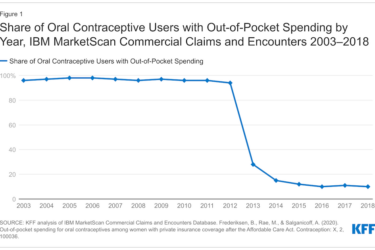
A few weeks into the cancellation crisis – some of which could be mitigated by the delay President Obama just announced – here’s what we know and what we don’t. In an upcoming post, I’ll highlight two very good stories exploring aspects of this.
Who’s affected?
The estimates on how many people are affected by plan cancellations vary widely. We’ve seen anything from “hundreds of thousands,” which is too low, to “up to 14 million,” which is too high.
A good insurance industry source – he’s in one of those Washington policy jobs where they are supposed to be sort of invisible so I can’t name him – tells me his own estimate is about 4 million people are affected. But it’s an estimate. I’ve seen other good reliable reporters who have cited anything from 3 million to 7 million.
Insurance is regulated by states, and there isn’t a centralized way of tracking. And state regulation of the individual market varies widely.
What kind of insurance did they have before they got cancelled?
There’s no single answer here. Some people did have good coverage. They got the policy some time ago and were able to keep it. GENERALLY SPEAKING – these people went through underwriting, i.e. they had to be healthy to get covered.
Some people got this kind of coverage, got sick and were still able to keep a plan that met their growing medical needs. We’ve all seen these anecdotal reports and we’ve probably all gotten some email from people with this experience. But as we all know, too, many people in the individual market find that they cannot keep their coverage or their premiums go way up, or they can’t get coverage in the first place because of pre-existing conditions. That was a big part of the motivation for the Affordable Care Act in the first place.
And many – probably most – had “skinny” or “bare bones” plans. These are plans that just didn’t cover very much. People who bought these plans may not have understood that the insurance wasn’t very good. Most people stay fairly healthy and they don’t find out how skimpy their coverage is until they really need it. Telling them their insurance was lousy wasn’t going to resonate if that wasn’t their experience. And they may not care. They were willing to spend X dollars of their own money, with no employer subsidy and no tax break, for a policy. They were, they thought, doing the right thing. Comparing these plans with the new more comprehensive plans on the exchanges may indeed be comparing apples and oranges – but some people liked their apples.
What happens to these people?
Some will end up paying more (and quite possibly not being very happy about it, even if the benefits are better). Some will pay more and have to change doctors and providers and may have bigger deductibles up front, even if they have better protections in case of a serious illness or injury.
Some will find comparable plans at comparable costs.
Some – it’s hard to know how many – will be exempt from the individual mandate on affordability grounds if their new insurance option costs more than 8 percent of their income. That exemption process isn’t finalized yet. Getting an exemption would allow them legally to be uninsured – but they may not want to be uninsured. The exemption would also allow them to get a catastrophic plan, but many will probably be better off with the cheaper bronze plans in the exchange.
Some of the people getting cancellations – probably roughly half – will qualify for subsidies on the exchanges. But, to find that out, they have to be able to get on the website and find out. So we don’t know how many there are and they don’t know who they are. In the meantime, these happy Obamacare insurance campers are to some extent theoretical – and definitely being drowned out by the unhappy ones.








